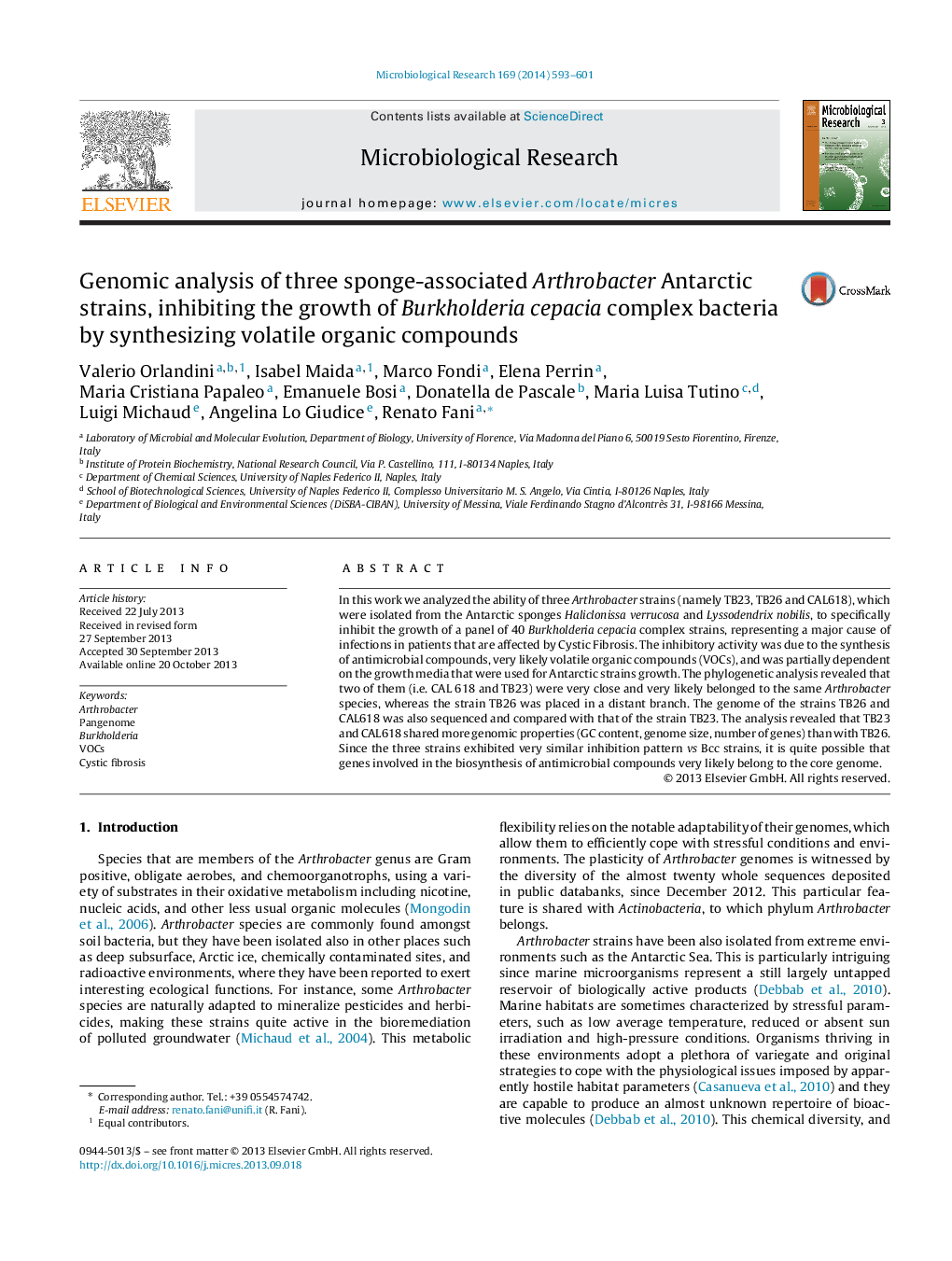| Article ID | Journal | Published Year | Pages | File Type |
|---|---|---|---|---|
| 2092234 | Microbiological Research | 2014 | 9 Pages |
In this work we analyzed the ability of three Arthrobacter strains (namely TB23, TB26 and CAL618), which were isolated from the Antarctic sponges Haliclonissa verrucosa and Lyssodendrix nobilis, to specifically inhibit the growth of a panel of 40 Burkholderia cepacia complex strains, representing a major cause of infections in patients that are affected by Cystic Fibrosis. The inhibitory activity was due to the synthesis of antimicrobial compounds, very likely volatile organic compounds (VOCs), and was partially dependent on the growth media that were used for Antarctic strains growth. The phylogenetic analysis revealed that two of them (i.e. CAL 618 and TB23) were very close and very likely belonged to the same Arthrobacter species, whereas the strain TB26 was placed in a distant branch. The genome of the strains TB26 and CAL618 was also sequenced and compared with that of the strain TB23. The analysis revealed that TB23 and CAL618 shared more genomic properties (GC content, genome size, number of genes) than with TB26. Since the three strains exhibited very similar inhibition pattern vs Bcc strains, it is quite possible that genes involved in the biosynthesis of antimicrobial compounds very likely belong to the core genome.
